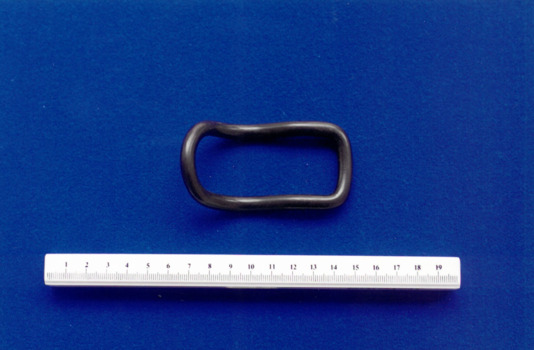Historical information
Uterine and anal pessaries were in use from the early 1900s onwards. The size and shape of the pessary varied greatly, and the variation of the original Hodges pessary is evident in many catalogues over a period of sixty years. Celluloid appliances were made in many different colours (ie. blue, pink, white, yellow). The use of celluloid gradually decreased during the late 1960s.
Physical description
Hodges -style intrauterine pessary, made of black vulcanite.

